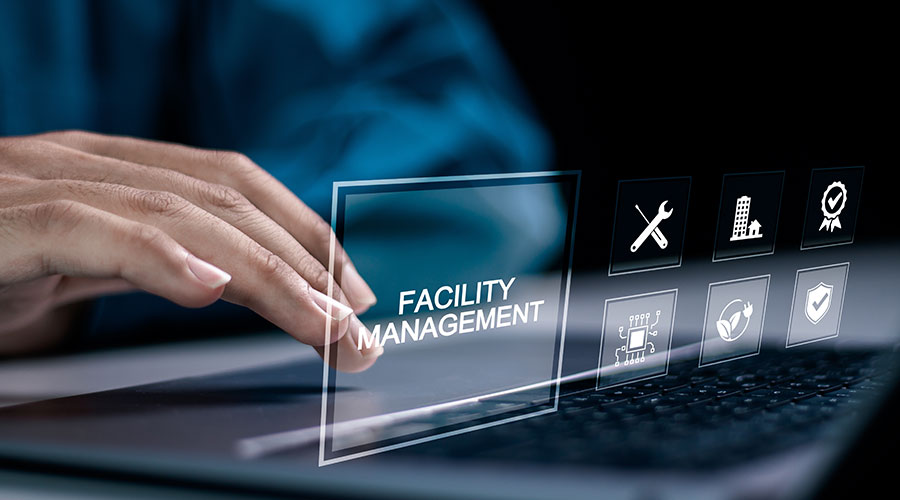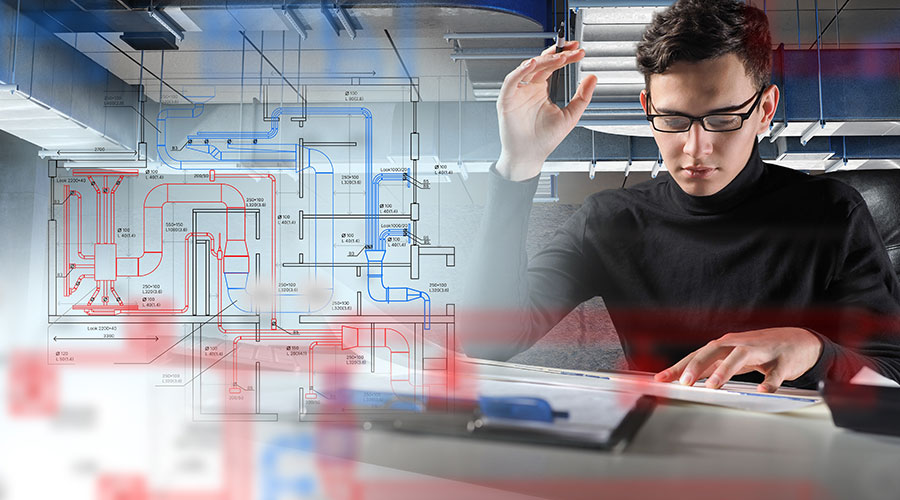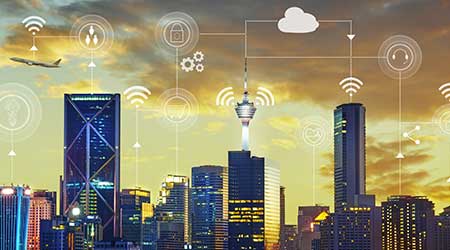« Back to Facilities Management Building Automation Category Home
Humanistic Digital Inclusion
May 14, 2018
- Building Automation
By Ken Sinclair
We need to use all our new found digital technologies to help us "look, listen, feel, and think before reacting" creating anticipatory humanistic buildings.
What is “digital inclusion”? "Digital inclusion is the ability of individuals and groups to access and use information and communication technologies." We need to build digitally inclusive communities for each of our buildings.
I have been a building automation junkie/zealot/freak for over five decades, always trying to trowel the newest technologies on those darn pesky people in our buildings. As an industry, we have always left the touchy/feely part of our buildings to behavioral scientist/psychologists. Our rapid digital transformation of everything has exposed (made transparent) the location and presence, plus the mood and feeling of the occupants (those pesky people) who are our reason for being. In addition to the old measured variables of temperature, humidity, IAQ, light, sound, video, etc., we now have the wherewithal to dynamically capture people’s anticipations and communicate their touchy/feely input back to our only purpose, making our occupant/client happy. We all need to find ways to use digital transformation transparency to "look, listen, feel, and think before reacting."
To create future anticipatory buildings, we need to dynamically locate and start a digital dialog gathering information of the anticipations of the users of our space. In the next gathering of words, empathic and healing add a new dimension to the anticipatory building. I am very pleased to be leading this discussion at the event below because I get to ask very smart people how they see this happening.
At the Nordic Smart Building Conference in Helsinki, I am the moderator of a panel discussion, "Empathic, Healing & Anticipatory Buildings" and I am trying to get my mind around what this might mean. I have been reviewing and reading much of the material that has been published on the topic.
These two great articles, “Thermal Delight - The Coming Revolution in Personalized Comfort” and “The Value of Occupant Comfort,” speak well to humanistic digital inclusion and "empathic, healing & anticipatory buildings"
Thermal Delight - The Coming Revolution in Personalized Comfort is by Brad White, P.Eng, MASc Principal, SES Consulting Inc. Brad ends his article with, “For too long our industry has focused on the physics of comfort, largely ignoring the psychological and physiological aspects. We have once again played right into the stereotype of our professional by designing systems that work reasonably well for the engineer but have poorly served the needs of the people in the buildings. It’s time we focused on better understanding how people actually experience thermal comfort and design systems that can truly deliver thermal satisfaction and even, dare I say it, enjoyment.”
The Value of Occupant Comfort: An Old Problem, Never Solved is by Matt Ernst, PE, CEM, QCxP, LEED AP, Burns & McDonnell. Matt refers to Tom Hartman’s articles from almost 20 years ago on automatedbuildings.com. I recommend all of his writing, but this one from 2002, in particular, is spot on: “I predict a very strong movement to ‘occupant integrated’ HVAC controls within the next decade (by 2010). My prediction is that by the second decade of this century, most class ‘A’ office spaces will be required to offer individual control of thermal and lighting levels. This integration will most likely be Internet-based…. The final question is ‘How?’ This is perhaps the most perplexing. Although for years building owners and occupants have been pushing for a higher level of building comfort, the industry has been, and continues to be, very slow to respond. The manufacturers in this industry are very risk adverse, and the engineering community is not only extremely fragmented but also tends to be ‘heavy equipment’ oriented, more interested in chillers and boilers than human comfort. It seems increasingly clear that a major impetus for these predicted changes will come from outside our industry.”
Please read my review "Buildings that Look, Listen, Feel and Think before Reacting" for more insight. I have written two closely related blogs on the Nordic Smart Building Conference website about how we all need to increase our virtual visibility, additional words for my original blog about Talking Transparency & Creating a Digital Twin.
As a technology guy forever from the west coast of Canada, here is me talking about the Digital Divide in 2001.
I am amazed at the people-focused global discussions now appearing in our magazine. This article just in from India is a great example: Transcendental Coalescence: In the Age of IoT and Analytics — A Smart City View.
“Transcendental coalescence: Is more than mashing-up of technologies and use cases owned by separate business/industry verticals. It is the fusion of people, processes, and technology to provide most intuitive and optimized business outcome.
“’A smart city uses information and communication technology (ICT) to enhance its livability, workability, and sustainability.’ [Smart Cities Council, 2014] The aim of a smart city is to unify all the elements and make them work together towards the betterment of its citizens via transcendental coalescence.”
Everything we do to automate our buildings is part of a bigger picture and needs to have humanistic digital inclusion.
I was unable to attend the Niagara Summit in New Orleans but am grateful that Therese Sullivan was able to provide a great recap of the event.
“In his keynote, Jim Bland, Tridium CEO and general manager, pointed out that people that know how to spin value out of data using the Niagara framework are at a moment of limitless possibilities.”
Marc Petock, chief communications officer and vice president, marketing, Lynxspring and Connexx Energy, was part of this event as well and provides this perspective.
Building Wellness: “Today, building owners, operators, occupants, and tenants are all looking for work environments that embrace technology to enable collaborative, healthy and comfortable working experiences.”
Please join me on my new journey to humanistic digital inclusion and empathic, healing, and anticipatory buildings.
Ken Sinclair is the founder, owner, and publisher of an online resource called AutomatedBuildings.com. He writes a monthly column for FacilitiesNet.com about what is new in the Internet of Things (IOT) for building automation.








